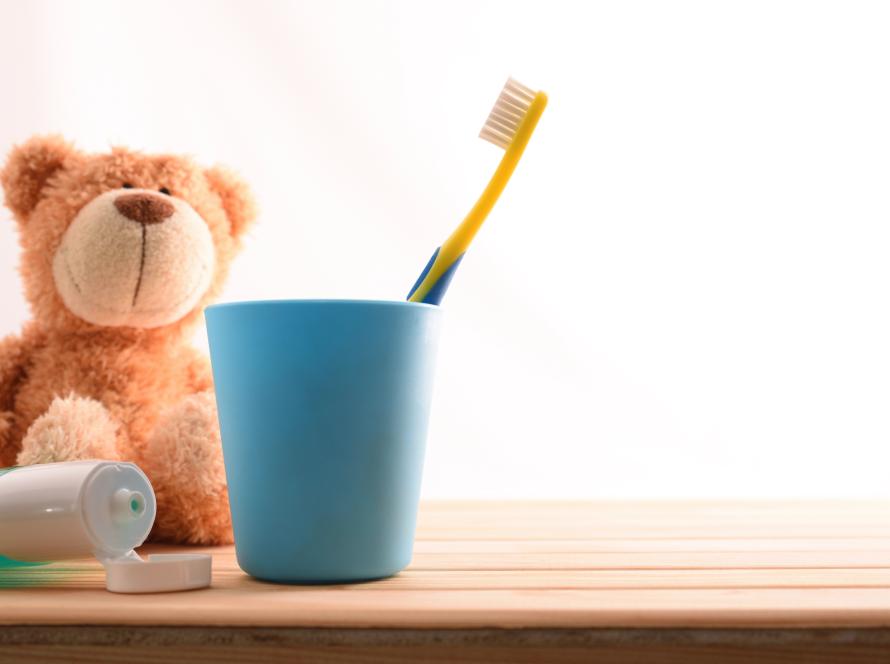As a parent, ensuring your child has strong, healthy teeth is a top priority. However, with so much information floating around, it’s easy to fall for common misconceptions about kids’ oral care. Some myths can lead to poor oral hygiene habits, which may result in cavities, enamel damage, or other dental issues.
To help parents make informed decisions, we’re debunking some of the most common myths about children’s oral health. From daily habits to seasonal concerns, here’s what you need to know to keep your child’s smile bright and healthy.
Myth #1: Fresh Fruits Can’t Harm Your Child’s Teeth
Truth: While fresh fruits are packed with vitamins and essential nutrients, certain fruits—like oranges, pineapples, and berries—are highly acidic. Over time, these acids can damage tooth enamel, increasing susceptibility to cavities and sensitivity.
Advice: Instead of cutting out fruit altogether, help your child develop good habits for protecting their teeth. Encourage them to drink water after eating fruit to help wash away acids. Additionally, wait at least 15 minutes before brushing their teeth to avoid damaging the softened enamel.
Myth #2: More Outdoor Play Means Less Risk for Cavities
Truth: Spring is the perfect time for kids to spend more time outdoors, whether it’s playing sports, riding bikes, or going on nature walks. While outdoor activities benefit overall health, they don’t necessarily lower the risk of cavities. In fact, frequent snacking during outdoor play can contribute to tooth decay, especially if children consume sticky or sugary snacks.
Advice: Instead of processed snacks, opt for tooth-friendly foods like cheese, yogurt, nuts, or crunchy veggies. These help promote saliva production, which naturally cleans teeth. Additionally, encourage kids to drink plenty of water, which helps rinse away food debris and acids.
Myth #3: Seasonal Allergies Don’t Affect Oral Health
Truth: Seasonal allergies are common among kids, but many parents don’t realize they can impact kids’ oral hygiene. When children experience nasal congestion due to allergies, they tend to breathe through their mouths. This leads to dry mouth, which reduces saliva production.
Advice: If your child suffers from allergies, make sure they stay hydrated. Drinking water frequently can help counteract dry mouth. You can also offer sugar-free lozenges or gum to stimulate saliva flow. If symptoms persist, consider consulting both a pediatrician and a children’s dentist for guidance.
Myth #4: Hydrating with Fruit Juices or Flavored Water is Just as Good as Plain Water
Truth: Many parents believe that giving their child 100% fruit juice or flavored water is a healthy alternative to soda. While these drinks may seem better than sugary sodas, they still contain natural and added sugars, as well as acids that erode enamel and increase the risk of cavities. Even sugar-free flavored waters can contain acidic ingredients that weaken tooth enamel over time.
Advice: The best drink for kids’ oral care is plain water. If your child enjoys juice, limit the intake to small amounts and encourage drinking through a straw to minimize contact with teeth. Also, make it a habit for them to rinse with water after drinking juice.
Myth #5: Brushing Harder Cleans Teeth Better
Truth: Some parents think that vigorous brushing will remove plaque more effectively. However, brushing too hard can damage enamel and irritate the gums, potentially leading to sensitivity and gum recession over time.
Advice: Teach your child to use a soft-bristled toothbrush and apply gentle, circular motions. A children’s dentist can also demonstrate the proper brushing technique during their next visit.
Myth #6: Kids Don’t Need to Floss Until They Have Gaps Closed Between Their Teeth
Truth: Many parents assume that flossing isn’t necessary for young kids, especially if their baby teeth have gaps. However, plaque and food particles can still get stuck between teeth, leading to cavities and gum irritation.
Advice: Flossing should start as soon as two teeth touch. Help your child floss daily, and consider using child-friendly floss picks to make this dental hygiene process easier. Establishing good habits early will support their kids’ dental treatment plan as they grow.
Myth #7: Dental X-Rays Are Unsafe for Children
Truth: Some parents worry about radiation exposure from dental X-rays and may avoid them altogether. However, modern dental X-ray technology uses very low levels of radiation and is safe for children when necessary.
Advice: Regular dental X-rays are an important part of a kids’ dental treatment plan. They help detect hidden cavities, monitor tooth development, and identify any alignment issues before they become serious problems. If you have concerns, speak with your children’s dentist to learn more about their safety protocols.
Myth #8: Chewing Gum Can Replace Brushing
Truth: Sugar-free gum can be helpful for stimulating saliva production, which aids in rinsing away bacteria. However, it does not replace brushing and flossing.
Advice: Make sure your child brushes twice a day and flosses once daily, even if they chew sugar-free gum. Good kids’ oral hygiene habits are the foundation of a healthy smile.
With so much information available, it’s easy for parents to fall for common myths about kids’ oral care. However, understanding the facts can help you make better decisions for your child’s dental health.
By focusing on a solid kids’ dental treatment plan—regular brushing, flossing, healthy snacking, and routine visits to a children’s dentist—you can ensure your child maintains a strong and healthy smile. If you have any concerns about your child’s teeth, be sure to schedule a checkup with a trusted pediatric dentist.
A healthy smile starts with the right habits—make sure your child gets the best care possible! Contact Toronto Kids Dental today for more information!


